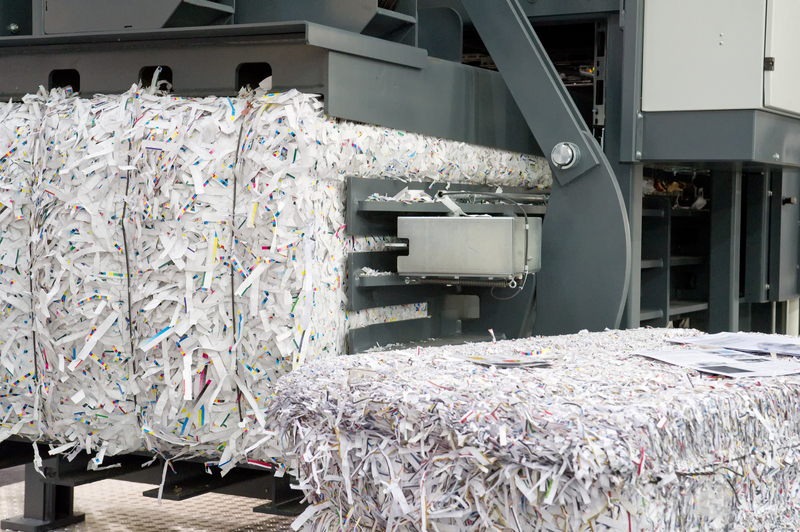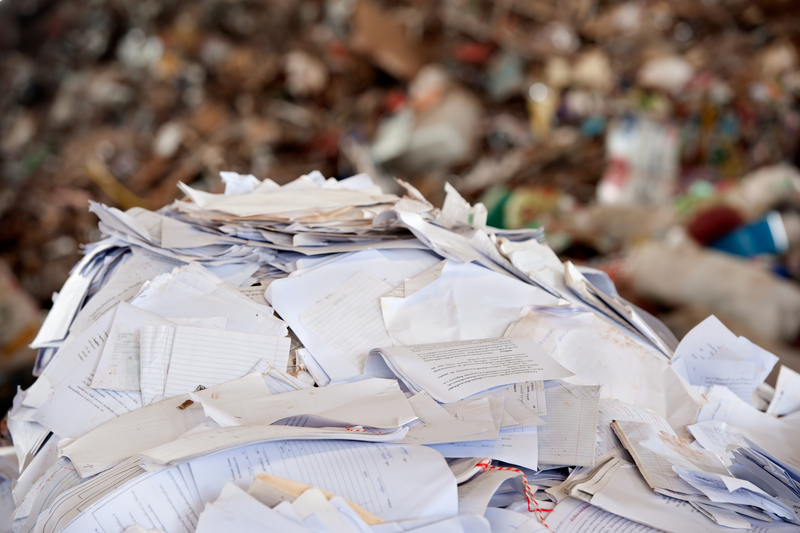Spotlight on Plastics to Avoid for a Sustainable Lifestyle
Living sustainably isn't just a trend--it's a responsibility we all share. Among the biggest challenges in modern living is our heavy reliance on plastics, which cause widespread environmental damage. For anyone seeking to live more sustainably, understanding which plastics are most harmful and learning how to avoid them is crucial. This comprehensive guide puts a spotlight on plastics to avoid for a sustainable lifestyle, helping readers make informed, eco-friendly choices every day.

Why Are Plastics Harmful?
Plastic pollution is a global issue impacting oceans, wildlife, and human health. Most plastics are manufactured from non-renewable fossil fuels, and they can take hundreds--even thousands--of years to decompose. Along the way, harmful chemicals leach into food, water, and soil, and microplastics contaminate the food chain. By understanding and avoiding the most problematic plastics, we can promote a sustainable lifestyle and preserve our environment for future generations.
The Plastic Identification Codes: Know Your Plastics
The resin identification code (RIC), typically displayed as a number inside a triangle on recycling labels, helps sort plastics by their chemical composition. Not all plastics are equal--some are relatively harmless or even recyclable, while others are particularly damaging to the environment and human health.
The Seven Common Plastic Types
- 1 - PET or PETE (Polyethylene Terephthalate)
- 2 - HDPE (High-Density Polyethylene)
- 3 - PVC (Polyvinyl Chloride)
- 4 - LDPE (Low-Density Polyethylene)
- 5 - PP (Polypropylene)
- 6 - PS (Polystyrene)
- 7 - Other (Miscellaneous plastics, including polycarbonate and bioplastics)
Let's explore which plastics to avoid for sustainable living and why.
Plastics to Avoid for a Greener Future
1. PVC (Plastic #3)
Polyvinyl chloride (PVC) is commonly found in plumbing pipes, vinyl siding, shower curtains, toys, and food packaging. PVC is known as the "poison plastic"--it contains phthalates, lead, and other toxic chemicals that can leach into the environment and harm health.
- Health Risks: PVC contains hazardous additives that are endocrine disruptors and have been linked to cancer, immune system damage, and reproductive problems.
- Environmental Impact: It is nearly impossible to recycle PVC safely. When incinerated, it releases dioxins--dangerous pollutants that linger in the environment.
Best Practice: Avoid buying products made from PVC whenever possible. Look for PVC-free alternatives for flooring, windows, and children's toys. Choose glass, untreated wood, or metal instead.
2. Polystyrene (Plastic #6)
Polystyrene is also known as Styrofoam. This lightweight material is widely used for disposable coffee cups, food containers, packing peanuts, and take-out boxes.
- Health Risks: Polystyrene can leach styrene, especially when heated. Styrene is a possible human carcinogen and a neurotoxin.
- Environmental Impact: While cheap to produce, polystyrene is nearly impossible to recycle on a large scale. It breaks into tiny pieces, becoming a major source of ocean microplastics.
Reduce your environmental footprint by steering clear of polystyrene products. Opt for reusable coffee cups, paper, or bamboo alternatives instead.
3. Polycarbonate and BPA (Plastic #7 - "Other")
Plastics labeled #7 are a mixed bag. The group includes polycarbonate, BPA-containing plastics (bisphenol A), and some biodegradable plastics. Polycarbonate is often used for water bottles, food containers, DVDs, and eyeglasses.
- Health Risks: BPA, found in some #7 plastics, is a hormone disruptor linked to serious health concerns, especially for infants and fetuses.
- Environmental Impact: Many #7 plastics are difficult to recycle, contributing to landfill waste and environmental contamination.
Choose BPA-free bottles and food storage, and always check labels. When in doubt, opt for glass or stainless steel.
4. Single-Use Plastics and Microplastics
Many single-use items--such as plastic straws, cutlery, stirrers, shopping bags, and food wrappers--are made from low-grade plastics that rarely get recycled.
- Environmental Impact: These plastics quickly break down into microplastics, which pollute waterways and soil, harming marine and terrestrial life.
- The Waste Problem: A plastic bag or straw may be used for minutes but will persist in the environment for centuries.
For a sustainable lifestyle, refuse all unnecessary single-use plastics whenever you can. Carry reusable items, like cloth grocery bags, metal straws, and bamboo cutlery.
Safer Plastics and Smarter Choices
Plastics That Are Generally Safer
- PET or PETE (Plastic #1): Common in beverage bottles and food jars, PET is widely recycled and considered a lower-toxicity option--but avoid reusing it for drinking water.
- HDPE (Plastic #2): Used for milk jugs, detergent bottles, and juice containers. This is considered one of the safest and most recyclable plastics.
- PP (Plastic #5): Often found in yogurt cups and butter tubs, PP is heat-resistant and less likely to leach chemicals. It's also recyclable in many areas.
Still, the best approach is to minimize plastic use overall, even if some options are technically safer.
How to Identify Plastics to Avoid
Becoming familiar with plastic identification codes can help you avoid the worst culprits. Here's a quick reference:
- Look for the number inside the triangle recycling symbol.
- Always check the label on food packaging, bottles, toys, and storage containers.
- PVC (3), PS (6), and many #7 plastics should be avoided, especially for food or drink uses.
Tip: Brands that prioritize sustainable packaging will often proudly display "BPA-free" or "PVC-free," making it easier to shop green.
Sustainable Alternatives to Common Plastics
Choosing alternatives to disposable plastics is central to a sustainable lifestyle. Luckily, there are plenty of eco-friendly options for the most common plastic products:
- Food Storage: Use glass containers, silicone pouches, or stainless-steel tins instead of plastic wrap or plastic containers.
- Bottled Water: Invest in a reusable stainless-steel or glass water bottle.
- Shopping Bags: Always carry a reusable shopping bag made from cotton, hemp, or recycled materials.
- Straws and Cutlery: Opt for bamboo, metal, or compostable alternatives.
- Clothing: Purchase organic cotton, wool, or recycled-fiber clothing to avoid synthetic microplastics.
By integrating these switches into your daily routine, you'll greatly reduce your plastic footprint and contribute to a healthier planet.
How to Reduce Plastic Use for a Sustainable Lifestyle
Simple Steps to Make a Big Impact
- Refuse: Say no to unnecessary plastic packaging, straws, and bags.
- Reduce: Buy in bulk, choose products with minimal packaging, and avoid disposable products.
- Reuse: Aim for reusable containers, utensils, and shopping bags.
- Recycle: Only recycle clean, approved plastics; know your local recycling rules.
- Repair & Upcycle: Give old plastic items a new life or purpose instead of tossing them.
Remember: the most sustainable plastic is the one you never use!
Get Involved in Community Recycling and Cleanups
Many communities organize plastic recycling drives and river or beach clean-ups. Participating not only helps the environment but also raises awareness of plastic pollution and encourages others to adopt a sustainable lifestyle.
Support Brands and Legislation Promoting Sustainability
- Choose eco-conscious brands that use biodegradable, compostable, or reusable packaging.
- Support local and national legislation banning single-use plastics.
- Advocate for tighter regulations on plastic production and improved waste management systems.
Myths About Bioplastics
Not all "bioplastics" are created equal. Some degrade only in industrial composting facilities and may still contain toxic additives. Before assuming a product marked "biodegradable" is safe or sustainable, research its ingredients and end-of-life instructions.
The Impact: Why Avoiding Plastics Matters
Every year, more than 380 million tons of plastic are produced globally. Of that, over 8 million tons end up in the ocean, harming wildlife, disrupting ecosystems, and making their way into our food chain as microplastics.
- Health: Reducing plastic exposure lowers the risk of harmful chemical contamination.
- Wildlife: Less plastic waste means fewer animals entangled, poisoned, or killed by discarded plastics.
- Climate: Using fewer fossil-fuel-based plastics helps slow climate change.
Our daily decisions may seem small, but collectively, they drive enormous change. By placing the spotlight on plastics to avoid for a sustainable lifestyle, we become part of the solution to one of the planet's most pressing environmental problems.

Conclusion: Creating a Plastic-Free Future
Embracing a sustainable lifestyle means being mindful of the plastics we use and understanding their environmental and health impacts. Focus on avoiding PVC, polystyrene, polycarbonate, and single-use plastics, learning to identify problematic materials, and choosing reusable, safer alternatives.
Every step you take--whether refusing a plastic bag, choosing a reusable bottle, or supporting eco-focused brands--makes a real difference. Let's keep our spotlight on plastics to avoid for a sustainable lifestyle and together build a cleaner, healthier future.
Further Reading and Resources
- Plastic Pollution Coalition
- Environmental Working Group's Plastics Guide
- Earth Day Initiatives on Plastics
- The Story of Stuff Project: Plastics
Start today: be plastic aware, and make each choice count for sustainability!
```